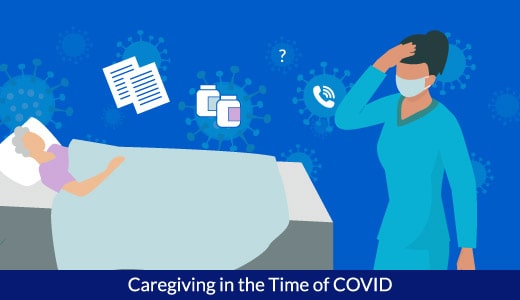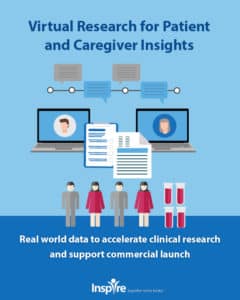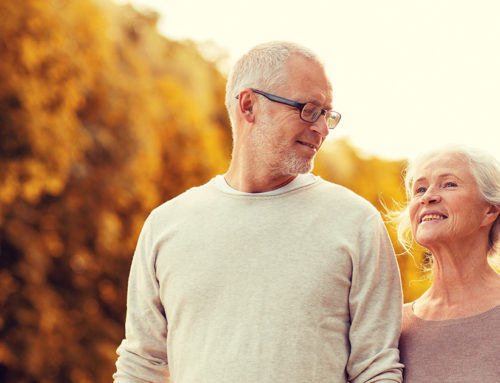Caregiving in the Time of COVID

By Kathleen Hoffman, PhD, MSPH with contributing writer/Inspire member Peigi Chace
On Inspire alone, 41,000+ members have written over 19,000 posts about Coronavirus. An Inspire Coronavirus support group has been formed. Real world voice analysis of caregiver posts on Inspire reveal the desperation caregivers have been experiencing during the pandemic.
my husband is on a vent in the hospital. I haven’t seen him since the ambulance came and drove off. They can’t get him off vent which, by the way, was introduced to break through blockage in the carotid artery to get to the clot in the brain which was a result of the Covid. Procedure was unsuccessful. His daughter and I wait endlessly for callbacks and updates. It’s heartbreaking.
The unmet needs of those caring for others with chronic conditions have heightened with COVID-19. Here’s the voice of another one of our members, Peigi Chace.
******************************************************************************************************************
It was still snowing. It had been snowing lightly but persistently for several days, adding to the snow drift on the back deck that was now up to the rail. I cleared off the car and parked with the passenger door close to the walkway. I had the driveway plowed again in case we needed to get out in a hurry or in case the EMTs had to get to us again. I shoveled the walk and salted it — again — to clear the last two inches that had fallen. It just wouldn’t stop snowing. Back in the silent house with Dad napping in the bedroom, and I burst into tears. “I just can’t take any more snow.”
When you are caregiving for sick people, it never stops “snowing.” Snow comes in the form of symptoms, phone calls, doctor’s appointments, insurance paperwork, medications, bottles, spoons, special foods, refills, and errands. Sometimes the snow is heavy. Sometimes you’re lucky and it only snows just a bit, it’s light and fluffy. Sometimes it snows hard. But you are preoccupied with weather, because, as the caregiver, you are the one who has to move the snow out of the way.
Back in October, my stepmother fell, and went to the ER for evaluation. She was bruised but fine. About 4 days later, my parent’s home care aide called to let me know they’d been exposed to COVID; one of the paramedics involved in her transport tested positive. Two weeks later, both parents were hospitalized with cold symptoms, and disappeared into a locked-down health care system six hours from where I live.
They stayed in separate wings of the COVID ward over a month, and then spent another month recovering in a nursing rehab facility — the kind of institution that COVID-19 has ravaged. Inseparable for 50 years, they were on different floors, unable to see each other, despite both having tested negative when they left the hospital.
At the end of December, I moved to their house to prepare for their homecoming. I knew they were going to need more help. My stepmother is a stroke survivor, and, as a result, can’t speak, and needs help dressing, bathing, and eating. Dad had been doing a lot of it, but he was incredibly weak now. He wasn’t going to be able to drive. They live in a rural area, with no grocery stores nearby, and no neighbors. They aren’t usually home in the winter. They don’t even have snow tires.
How could my parents go on living here? How were they going to get groceries, much less get to medical appointments?
The snow began falling in earnest when the house insurance got cancelled because they’d missed a payment while they were sick. The fuel oil company refused to deliver because the driveway was icy. The speech therapist at the nursing facility said my stepmother had developed some swallowing difficulty, so I asked her how we handle that, and ordered a supplement to thicken her liquids. The caseworker wanted to know if we had the right toilet seat, the right shower chair, did we have grab bars or stairs and how many? I’d already dealt with getting rid of throw rugs and blocking the stairwell to prevent more falls for my stepmother, but now my father needed help, too. They weren’t even home yet and I had a new list of requirements.
Obviously, this was not a one-person job. We had had a few paid caregivers before COVID-19, but over the two months that my parents were hospitalized, most of the caregivers had moved to other jobs or were back in school. I began making phone calls and sending texts, hoping I could get other aides as compassionate as those we’d had. I didn’t know who would come to a rural area, or how much care we could really afford, or for how long. My father would insist he didn’t need more help, “I’m fine,” he’d say, then have another crisis.
“We never planned for this,” Dad said. “We never planned for what would happen if either one of us became disabled.” As caregivers, we are constantly being put in a position of dealing with situations with which we have no experience and no skills. How do you get insurance reinstated when the policyholder is in the hospital? How do you get a weak person transferred into and out of a car single-handedly? How do you turn a diet into one that is “mechanical soft with honey-thickened liquids”? How do you change a diaper on a person with mobility problems? What do you do when a person refuses to swallow a critical medication? For some of these questions and conditions, there are experts or readily available answers. For COVID — and its survivors — the professional answer has frequently been, “We don’t know yet.” They just don’t know enough about it. They can’t tell you if, or when, the snow will ever stop.
My father got out of nursing rehab first, and was doing pretty well until he was given the 2nd COVID vaccine shot. He went right back into the hospital with respiratory symptoms. He’s back out now, but says his head “doesn’t feel right,” he’s constantly cold, and, as a retired designer, is troubled because his visual memory is gone the way that smell or taste is gone for others. He’s 89.
My stepmother came home from nursing rehab, had a hearty dinner, walked around the house with her walker, went to bed, and fell asleep. We found her not breathing. I performed CPR for 20 minutes until the ambulance came. She died. She was 81.
I thought the snowstorm was over. How can the tasks of caregiving go on when the patient is gone? But there was paperwork to be done: find the will, change the owner of the bank accounts, figure out what happens to a Roth IRA when someone dies, estimate how many certified Death Certificates you may need. The nature of the tasks changed, but the snow continued to fall. The drifts felt like they’d reached the roof.
A few days later, the state Health Department called: With all the people in the house, the paramedics, the coroner, the police, the funeral home staff — more people than we’d had in the house for months, and all of us in masks — I was told I’d been exposed to COVID and had to isolate for 2 weeks. Take care of Dad, but don’t leave the house. That’s when the snow stopped. We could pause and mourn.
What I hadn’t realized is how, over the course of their illness, I’d changed into a person who was conditioned to expect bad news. On Tuesday, the urologist’s office called me because they had a few concerns after Dad’s 6 month check up. The physician’s assistant began with news about an undetectable RMA level, but by then I was already anxious. Why did they call back so soon? Which tests did he have during that appointment? What were they worried about? What was going to happen to all our lives in the next five minutes? It turned out to be just a flurry, and I’d automatically reacted as if it had been a forecast of the next blizzard.
I’m not in this alone; other people’s kindnesses have eased many heartaches. Friends tell me that I’m brave, and a good daughter. I have my shovel and I’ve developed a strong back. But I’m tired. And I wish it were spring.
____________________________________________________
Peigi Chace is a freelance writer, wife, and caregiver living in Southern New Hampshire. Her Dad has gone to Florida.
Inspire offers a trusted community to patients and caregivers. Our goal with this blog, this website and our content is to provide the life science industry access to the true, authentic patient voice. In so doing, we support faithful operationalization of patient-centricity. Take a look at our case studies, eBooks and news outlet coverage.






